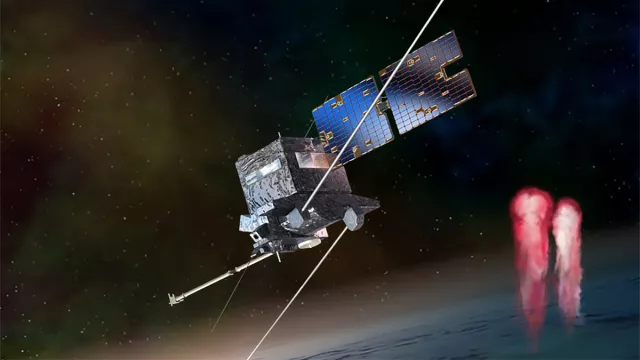Taranis should have been the first satellite designed to observe and characterize luminous, radiative and electromagnetic phenomena occurring at altitudes of 20 to 100 kilometres over thunderstorms. It was lost on its launch by Vega from the Kourou launch base on 17 November 2020.
Key information
Key figures
- 200 kg: satellite mass
- 1m3: satellite volume
- 6 instruments
- 5 contributing French laboratories
Key milestones
- 17 November 2020: TARANIS satellite lost after launch failure of Vega
- August 2018: Payload integrated on spacecraft bus
- September 2017: Payload delivered
- June 2007: Transition to phase B of development
Project in brief
Taranis, the Celtic god of thunder and lightning, is a fitting name for a satellite that was set to observe gigantic luminous events 30 to 90 kilometres high occurring above large storm clouds like those that form in the intertropical belt. Unfortunately, the satellite was lost on launch on 17 November 2020.
Discovered 20 years ago, such transient luminous events (TLEs)—variously called ‘elves’, ‘sprites’ and ‘blue jets’—remain shrouded in mystery. They are sometimes accompanied by terrestrial gamma-ray flashes (TGFs). The correlation between these TLEs and TGFs is one of the scientific questions the TARANIS mission (Tool for the Analysis of RAdiation from lightNing and Sprites) was hoping to answer.
The TARANIS microsatellite planned to fly over thousands of TLEs and TGFs for at least two years. Its scientific instruments were to detect these events and record their luminous and radiative signatures at high resolution, as well as the electromagnetic perturbations they set off in Earth’s upper atmosphere.
TARANIS was to deliver unique data to probe the mechanisms underlying lightning energy transfers between the atmosphere, ionosphere and magnetosphere, and assess their possible impacts on Earth’s environment.
CNES’s role
The mission was initiated by CNES, which was prime contractor and in charge of payload integration on the Myriade microsatellite bus and testing.
Contacts
Sun, Heliosphere & Magnetospheres subject matter expert
Kader Amsif
E-mail: kader.amsif at cnes.fr


